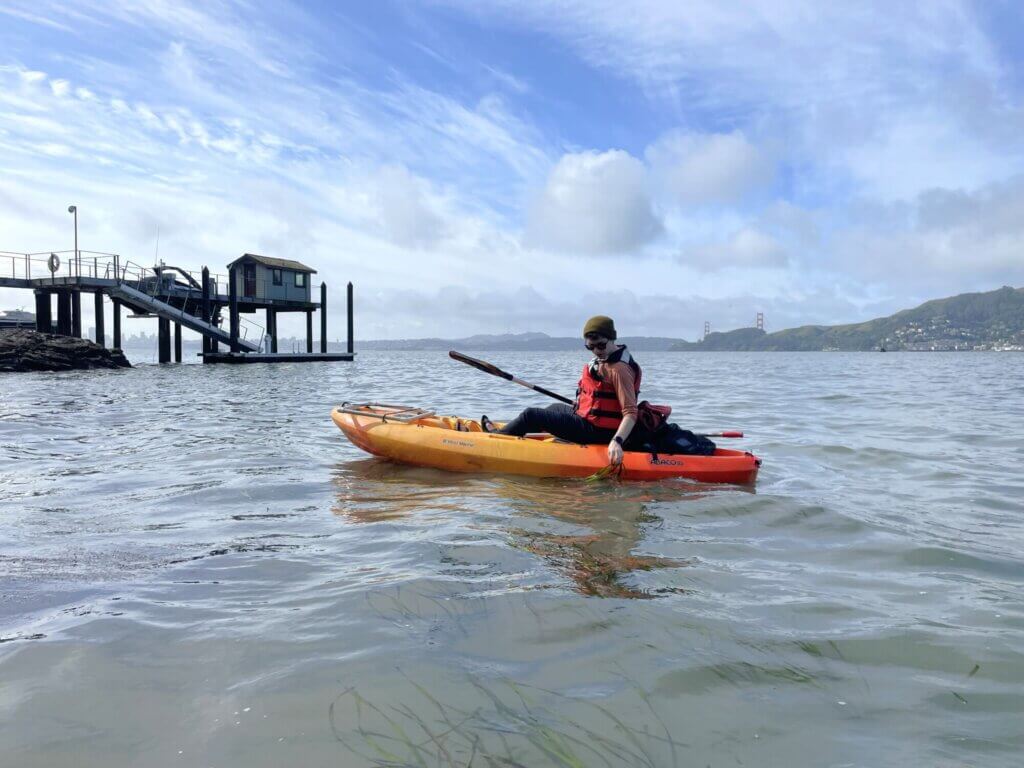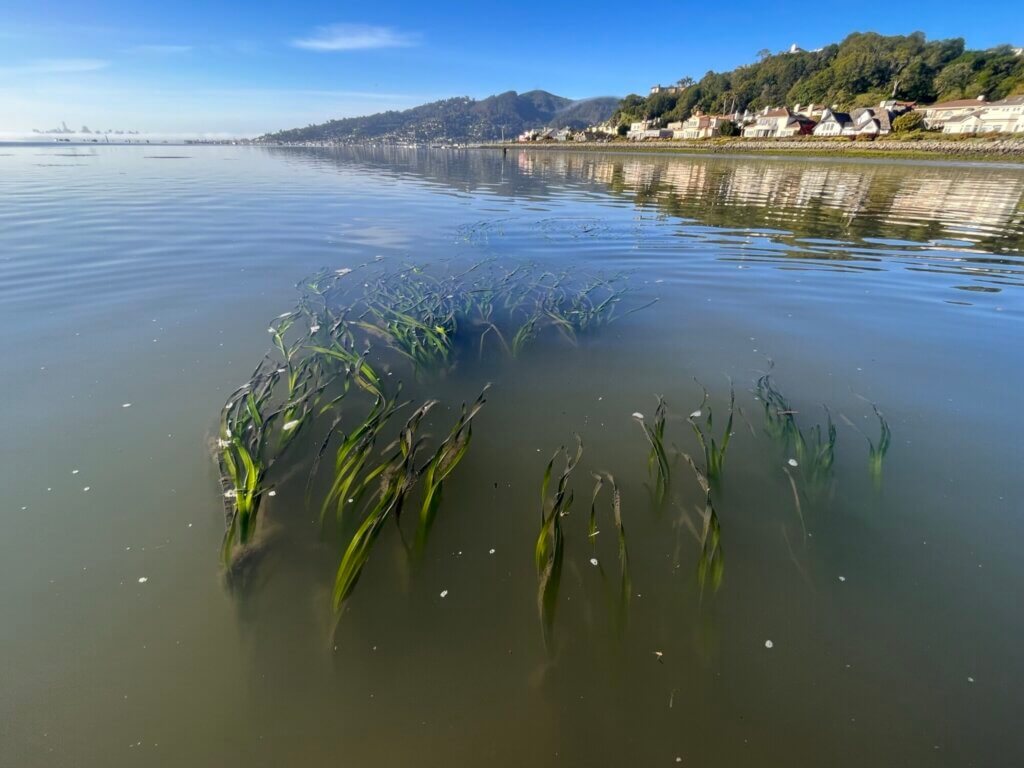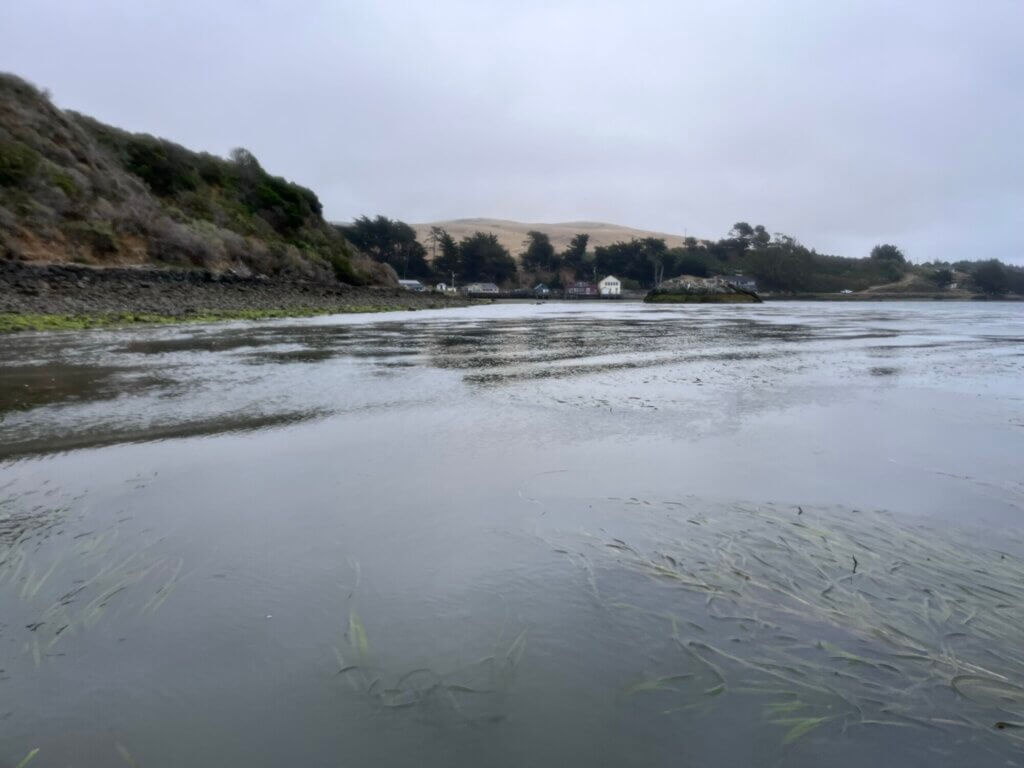Reflecting on Over Two Decades of Eelgrass Surveys
Eelgrass (Zostera marina), which grows along many shorelines and shallow embayments across California, is an easy-to-miss underwater plant with outsized importance for marine ecosystems. In northern California, eelgrass beds provide vital habitat for many marine species, such as juvenile Dungeness crabs and salmonids as well as Pacific herring spawns. Eelgrass also helps to protect shorelines – slowing down incoming waves by creating drag – and provides a natural form of carbon storage, sometimes called “blue carbon”.
Because of the important ecosystem services eelgrass provides, eelgrass receives special protections at the federal, state, and regional levels. Most important among these in California is the California Eelgrass Mitigation Policy, or CEMP, which was developed in 2014 by the National Marine Fisheries Service (NMFS), a division of NOAA Fisheries. The CEMP provides a framework for surveying eelgrass, monitoring for potential impacts to eelgrass, and developing eelgrass mitigation plans should an activity result in impacts to eelgrass habitat. In addition, the CEMP provides a variety of design guidelines for overwater structures, such as piers, to avoid or minimize impacts to this important underwater habitat. However, the CEMP does leave room for professional judgement, especially when it comes to determining the appropriate survey, monitoring, and mitigation methods for a given project and eelgrass bed.
Founded in 1981 following the rollout of fundamental federal environmental policies like the Clean Water Act, Marine Mammal Protection Act, and the Magnuson-Stevens Fishery Conservation and Management Act, WRA has been conducting surveys of California’s eelgrass beds for more than two decades using a variety of survey methods. Today, there are three primary ways in which WRA conducts eelgrass surveys depending on the size, location, and ecology of the eelgrass bed we are assessing:
- Direct visual assessments by boat or kayak aided with underwater video cameras.
- Sidescan sonar with the support of key teaming partners.
- Drone technology supported by WRA’s FAA-certified drone pilots.
In 2023 alone, WRA surveyed over 700 acres in San Francisco Bay and mapped over 120 acres of eelgrass beds within the estuary. Over the last two decades, WRA biologists have performed more than 40 eelgrass surveys to support a variety of project types and stages, including restoration, maintenance dredging, and pier installation projects. In addition to the many eelgrass surveys WRA performs each year, WRA prepares eelgrass monitoring mitigation plans for projects with potential to result in impacts to eelgrass. With our breadth of experience, WRA’s biologists are attuned to both regional trends in eelgrass ecology and the latest expectations of regulatory agencies, such as NMFS and the California Department of Fish and Wildlife.
Eelgrass survey season is just around the corner. The survey season begins earlier and is longer in southern portions of California than elsewhere in the state:
- Southern California: March 1 – October 31
- Central California: April 1 – October 31
- San Francisco Bay: April 1 – October 31
- Northern California: May 1 – September 30
Whether you’re planning a shoreline re-development project or looking into nature-based solutions for shoreline protection, WRA biologists are ready to provide input on whether eelgrass may be a factor for your project planning.
To learn more about WRA’s eelgrass services or to request a survey, please contact Liz Allen at or submit a request through WRA’s contact page.
WRA Contact:

Liz Allen
liz.allen@wra-ca.com






